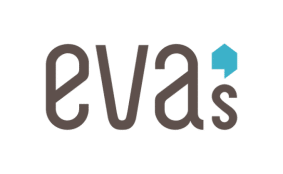a) Disability
The term disability as defined by the Accessibility for Ontarians with Disabilities Act, 2005 and the Ontario Human Rights Code, refers to:
a) any degree of physical disability, infirmity, malformation or disfigurement that is caused by bodily injury, birth defect or illness and, without limiting the generality of the foregoing, includes diabetes mellitus, epilepsy, a brain injury, any degree of paralysis, amputation, lack of physical coordination, blindness or visual impediment, deafness or hearing impediment, muteness or speech impediment, or physical reliance on a guide dog or other animal or on a wheelchair or other remedial appliance or device,
b) a condition of mental impairment or a developmental disability,
c) a learning disability, or a dysfunction in one or more of the processes involved in understanding or using symbols or spoken language,
d) a mental disorder, or
e) An injury or disability for which benefits were claimed or received under the insurance plan established under the Workplace Safety and Insurance Act, 1997.
b) Customer Service Standard of AODA
The AODA has mandated accessibility standards to remove barriers in important areas of everyday living for persons with disabilities. The vision behind the act is to achieve accessibility for Ontarians with disabilities by 2025. The Customer Service standard is the first standard developed under the Act. Other standards are expected to cover transportation, information, communication, employment, and the built environment and will be introduced over the next several years.
c) Client, Consumer, Customer
A person who inquires about our services, accesses our services, or does business with us.
d) Barrier
Anything that prevents a person with disability from fully participating in all aspects of society because of their disability, including a physical barrier, an architectural barrier, an information or communications barrier, an attitudinal barrier, a technological barrier, an economic barrier, or a policy or practice.
e) Assistive Device
Any devices that persons bring with them such as white canes, walkers, vision aids such as binocular or monocular, magnifiers, or oxygen tanks.
f) Assistive Communication Devices
Aids or software that are used to help persons with disability communicate. Examples of assistive communications devices are test readers, amplifiers, screen magnifiers, captioning, and interpretation.
g) Guide Dog
A highly-trained working dog that has been trained at one of the facilities listed in Ontario Regulation 58 under the Blind Persons’ Rights Act, to provide mobility, safety, and increased independence for people who are blind.
h) Service Dog
As reflected in the Health Protection and Promotion Act, Ontario Regulation 562, a dog other than a guide dog for the blind is a service dog if:
- it is readily apparent to an average person that the dog functions as a service dog for a person with a medical disability; or
- The person who requires the dog can provide, on request, a letter from a physician or nurse confirming that the person requires a service dog.
i) Service Animal
As reflected in Ontario Regulation 429/07, an animal is a service animal for a person with a disability if:
- it is readily apparent the animal is used by the person for reasons relating to his or her disability; or
- The person provides a letter from a physician or nurse confirming the person requires the animal for reasons relating to the disability.
j) Support Person
As reflected in Ontario Regulation 429/07, a support person accompanies a person with a disability to help with communication, mobility, personal care, medical needs, or access to goods and services.
